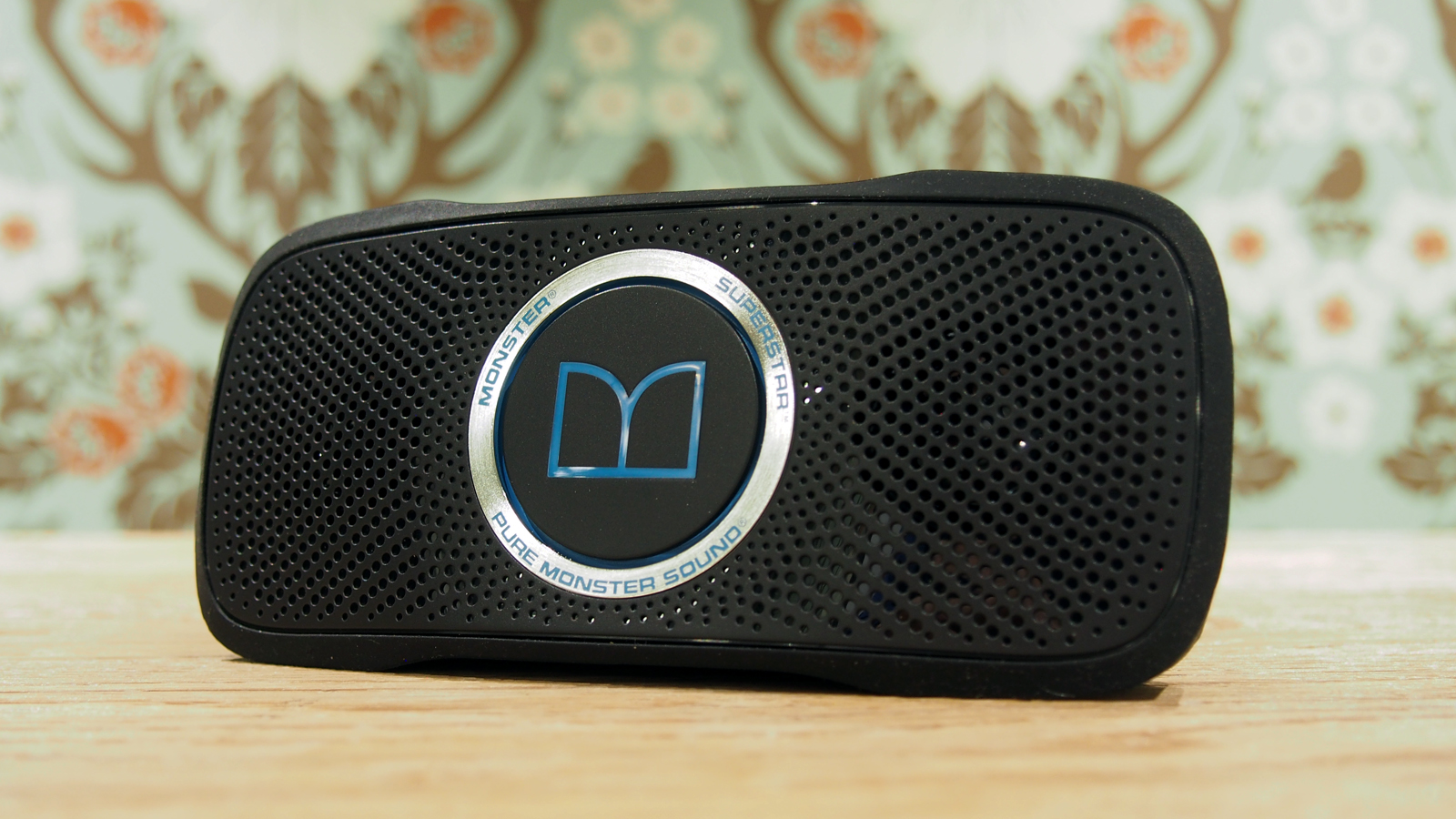TechRadar Verdict
Monster's SuperStar BackFloat offers a unique and water-friendly twist on your average Bluetooth speaker, but the results sink it. The inconsistent sound performance across genres, average battery life and high price prove that you should look elsewhere.
Pros
- +
Floats in water
- +
Sophisticated design
- +
Loud sound
Cons
- -
Costly
- -
Average battery life
- -
Narrow listening angle
- -
Distorted highs and lows
Why you can trust TechRadar
Water-resistance in Bluetooth speakers has been a saving grace for beach bums and shower singers alike. But even so, it's still rare that a Bluetooth speaker ever gets the chance to take a full-on dip with you in the water. Monster is the latest to answer that call with the SuperStar BackFloat.
For $169 (£119, about AU$214), the SuperStar BackFloat floats on its back in water, pumps out a loud sound and offers support for calls, to boot. But even with an adequate feature set, the novelty of a floating Bluetooth speaker doesn't outweigh the high asking price and a few performance-related issues.
Design
Being the waterproof floatation device that it is, you'd think that the Monster SuperStar BackFloat would be shaped like a lifesaver or a neon pool toy. Thankfully, that's not the case. The speaker is small, easy enough to grip with one hand and is simple, yet confident in its design.
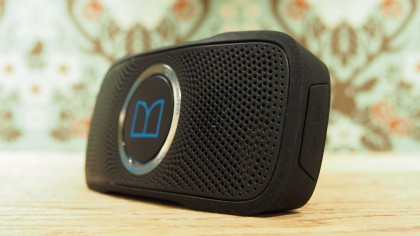
The SuperStar BackFloat owes its aquatic ability to its lightweight build, coming in at a half a pound. Also deserving of thanks is the silicone that wraps around the unit as a life jacket of sorts. This slip protects from drops and dings and yields a slick, unibody appearance.
On top of the SuperStar BackFloat, there is a panel of buttons that perform a fairly standard set of functions. From left to right, there is a Bluetooth connect button, which also picks up calls with a single press, volume increase and decrease buttons to its right and finally, a power button. Each button responds with a tactile click, and bright LEDs hugging the panel provide status indicators that are helpful. To the left of the lineup of buttons is a microphone for taking calls on your Android or iOS device.
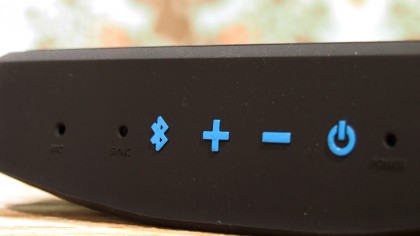
On its side, a flap in the silicone layer covers two inputs: a micro USB port to charge the speaker and a 3.5mm input for plugging in your wired devices. Monster instructs that it's crucial to make sure that the flap is closed if you're taking it for a dip.
Covering the front of the speaker is a black grille that allows you to peek through at its two tweeters. In the middle of the unit, there's some branding that surrounds the forward-firing passive radiator. The radiator helps the SuperStar BackFloat push out a loud sound that, at times, defies its small form factor.
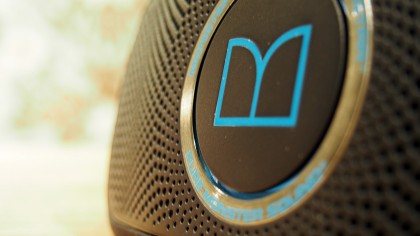
Monster includes a breathable mesh tote to carry the SuperStar BackFloat in when it's not being used. There's a micro USB cable for charging in the box as well.
Performance
It's tough to sort out what the biggest selling point of Monster's SuperStar BackFloat is, and that's mostly because it does most of what it sets out to do quite well. The speaker has an appealing design, it floats in water like a champ – but it can do more than that.
Sound performance is also a strength of the BackFloat. As you'd hope from a Monster audio product, the dual tweeters and passive radiator team up to push out a sound that is powerful. Most of the time, this Bluetooth speaker has no issue reproducing songs faithfully.
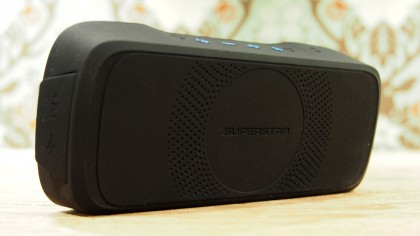
However, the speaker places its focus on gutsy mids. Highs and lows are still present, but they each represent a fragile limitation of the BackFloat. If a song is pushing the low-end or coming through heavy on highs, the sound gets a bit too distorted for my liking.
When you're listening to the SuperStar BackFloat in a non-aquatic environment, it sits at a slight tilt. Monster says that this listening angle offers the best sound performance. This claim presents a predicament if you're using this speaker primarily in the water. When floating along, the speaker aims straight up, so you won't be hearing your music at the optimal angle. If you're willing to forgive a hit in performance for the ability to float, you'll find that the sound is still quite serviceable.
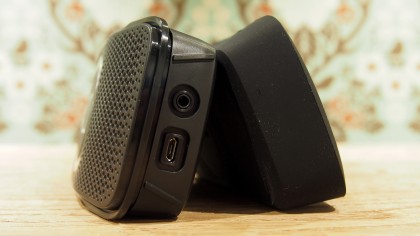
In a large bathtub, the BackFloat does a good job riding the waves and not becoming easily submerged, which is something you definitely don't want to do too much of. So long as you aren't cannonballing, keeping it afloat shouldn't be a problem. It's alright to get some water on the BackFloat, but too much splash on the sound drivers and passive radiator really muddles up the sound. Thankfully, it's an easy issue to remedy. Just remove it from water, strip away its silicone cover and let everything dry out.
Monster's floating speaker connects via Bluetooth easily, and the wireless tether is strong. My phone was close to 30 feet away (the length of my studio apartment) without any loss in signal. The built-in microphone is sensitive enough to pick up my voice from a few feet away, no matter where I'm standing around the speaker.
The one key area where the SuperStar BackFloat falls short is with battery life. If you're taking this speaker out to use in the water, you'll probably be away from an electrical source for a while.
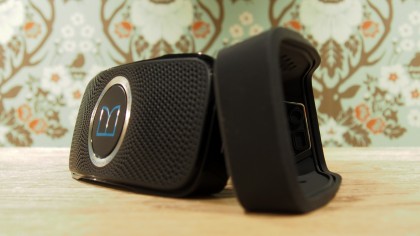
With that, the seven hours of advertised battery life isn't enough for the price, especially when compared to some cheaper competition in its size class, like the UE Mini Boom. I was able to stretch the BackFloat's battery close to eight hours at a consistent volume, but the UE Mini Boom offers ten hours of battery life and is a whole lot more affordable at $99 (£79, AU$99).
Final verdict
What the Monster SuperStar BackFloat does best is in the name. It floats in water on its back and plays your tunes. Other than that admittedly cool ability, this Bluetooth speaker doesn't offer up much in the way of game-changing features.
This speaker's high asking price, average battery performance and limited range in sound cast a shadow that its cool ability to float can't quite escape. However, if you do look past its price and many flaws, you'll enjoy this semi-amphibious speaker.
Cameron is a writer at The Verge, focused on reviews, deals coverage, and news. He wrote for magazines and websites such as The Verge, TechRadar, Practical Photoshop, Polygon, Eater and Al Bawaba.
